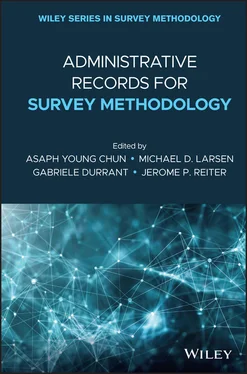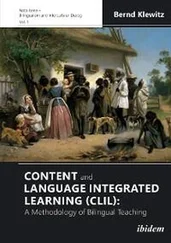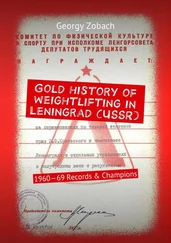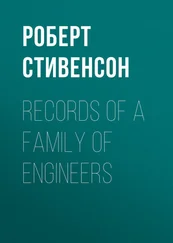321 316
322 317
323 318
324 319
325 320
326 321
327 322
328 323
329 324
330 325
331 326
332 327
333 328
334 329
335 330
336 331
337 332
338 333
339 334
340 335
341 336
342 337
343 338
344 339
345 340
346 341
347 342
348 343
349 344
350 345
351 346
352 347
353 348
354 349
355 350
356 351
357 352
358 353
359 354
WILEY SERIES IN SURVEY METHODOLOGY
Established in Part by Walter A. Shewhart and Samuel S. Wilks
Editors: Mick P. Couper, Graham Kalton, J. N. K. Rao, Norbert Schwarz, Christopher Skinner, Lars Lyberg
Editor Emeritus: Robert M. Groves
Administrative Records for Survey Methodology
Edited by
Asaph Young Chun
Statistics Research Institute
Statistics Korea, Republic of Korea
Michael D. Larsen
Department of Mathematics and Statistics
Saint Michael’s College, United States
Gabriele Durrant
Department of Social Statistics and Demography
Southampton University, UK
Jerome P. Reiter
Department of Statistical Science
Duke University, United States

This first edition first published 2021 © 2021 John Wiley and Sons, Inc.
All rights reserved. No part of this publication may be reproduced, stored in a retrieval system, or transmitted, in any form or by any means, electronic, mechanical, photocopying, recording or otherwise, except as permitted by law. Advice on how to obtain permission to reuse material from this title is available at http://www.wiley.com/go/permissions.
The right of Asaph Young Chun, Michael D. Larsen, Gabriele Durrant, and Jerome P. Reiter to be identified as the authors of the editorial material in this work has been asserted in accordance with law.
Registered Office John Wiley & Sons, Inc., 111 River Street, Hoboken, NJ 07030, USA
Editorial Office 111 River Street, Hoboken, NJ 07030, USA
For details of our global editorial offices, customer services, and more information about Wiley products visit us at www.wiley.com.
Wiley also publishes its books in a variety of electronic formats and by print-on-demand. Some content that appears in standard print versions of this book may not be available in other formats.
Limit of Liability/Disclaimer of Warranty While the publisher and authors have used their best efforts in preparing this work, they make no representations or warranties with respect to the accuracy or completeness of the contents of this work and specifically disclaim all warranties, including without limitation any implied warranties of merchantability or fitness for a particular purpose. No warranty may be created or extended by sales representatives, written sales materials or promotional statements for this work. The fact that an organization, website, or product is referred to in this work as a citation and/or potential source of further information does not mean that the publisher and authors endorse the information or services the organization, website, or product may provide or recommendations it may make. This work is sold with the understanding that the publisher is not engaged in rendering professional services. The advice and strategies contained herein may not be suitable for your situation. You should consult with a specialist where appropriate. Further, readers should be aware that websites listed in this work may have changed or disappeared between when this work was written and when it is read. Neither the publisher nor authors shall be liable for any loss of profit or any other commercial damages, including but not limited to special, incidental, consequential, or other damages.
Library of Congress Cataloging-in-Publication Data
Names: Chun, Asaph Young, editor. | Larsen, Michael D., 1977- editor.
Title: Administrative records for survey methodology / edited by Asaph Young Chun, Statistics Research Institute | Statistics Korea, Republic of Korea, Michael D. Larsen, St. Michael’s College, Colchester, United States, Gabriele Durrant, UK, Jerome P. Reiter, United States.
Description: First edition. | Hoboken, NJ : Wiley, 2021. | Series: Wiley series in survey methodology
Identifiers: LCCN 2020030571 (print) | LCCN 2020030572 (ebook) | ISBN 9781119272045 (cloth) | ISBN 9781119272052 (adobe pdf) | ISBN 9781119272069 (epub)
Subjects: LCSH: Surveys–Methodology. | Surveys–Quality control.
Classification: LCC HA31.2 .A36 2021 (print) | LCC HA31.2 (ebook) | DDC 001.4/33–dc23
LC record available at https://lccn.loc.gov/2020030571
LC ebook record available at https://lccn.loc.gov/2020030572
Cover Design: Wiley
Cover Image: © PopTika/Shutterstock
Sample surveys are used by governments to describe the populations of their countries and provide estimates for use in policy decision making. Surveys can focus on individuals, households, businesses, students and schools, patients and hospitals, plots of land, or other entities. For surveys to be useful for official purposes they must cover the target population, represent the entirety of the population, collect information on key variables with accurate measurement methods, and have large enough sample sizes so that estimates are sufficiently precise at national and subnational levels. Achieving these four goals in a nationwide sample survey with a limited budget while being conducted in a short time interval is very challenging. The purpose of this book is to explore developments in the use of administrative records for improving sample surveys.
Sample surveys aim to gather information on a population. The target population is the specific part of the population that one aims to survey. Some parts of the broader population typically are excluded from the target population based on contact mode, data collection mode, the survey frame or list, or convenience. Individuals without a regular address, residing in some forms of group quarters, or without phone or Internet access, for example, might be effectively ineligible to serve as respondents. Survey frames record contact information and some other variables on members of a population, but of course they do not necessarily include all members of the population and have up-to-date information on everyone. Some individuals with accurate contact information in the frame will prove harder than others to contact or even refuse to participate. Surveys then are potentially limited to reporting about respondents and the population to which they are similar. Surveys cannot be overly long or else they risk deterring potential respondents and costing a lot of money per respondent. As a result, surveys can accommodate only so many questions. Self-report and less detailed questions, with their inherent limitations, for sensitive and complex items, often must be used for expediency. Budgets for national surveys compete with other government interests. Even large surveys typically have smaller-than-desired sample sizes in local areas and in subsets of the population. Despite these significant challenges, official statistical agencies around the world gather critically useful data on a myriad of topics.
The conditions for conducting sample surveys have changed immensely in the past 100 years. There is little chance that change will slow down. In-person surveys have been replaced and augmented by surveys by mail, by phone, and by Internet. Contact and data collection via multiple modes now are standard. The social environment, too, has evolved. Response rates are lower. Despite technological advances, people are increasingly busy. Official government surveys compete for attention with ever-more marketing and polling. Concerns over privacy and confidentiality have been elevated, rightly so, in the public consciousness. Simultaneously, government, researchers, and the public want more from data and surveys. Official surveys contribute to identifying challenges and to improvements in society. It is not practical, or maybe even possible, to get more out of old ways of conducting surveys.
Читать дальше













